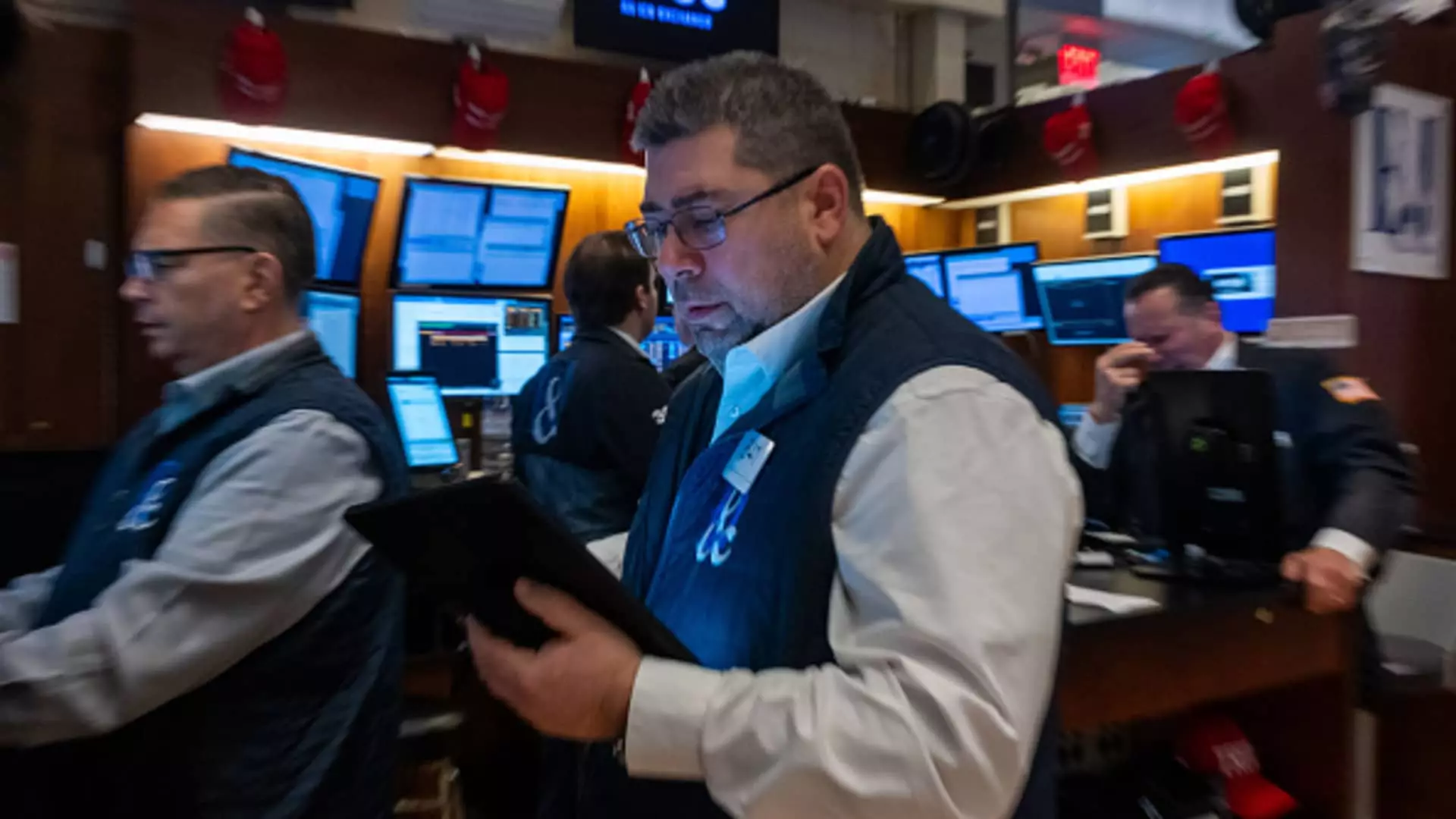Investors are witnessing a remarkable shift in trading behavior, especially with the increased adoption of leveraged and inverse exchange-traded funds (ETFs). These instruments have introduced a new layer of complexity in an already intricate financial landscape, attracting not only seasoned traders but also a newer generation eager for rapid returns. This article aims to explore the implications of this trend, looking closely at the mechanisms behind these products, the demographic engaging with them, and the inherent risks involved.
Recent trading volume records indicate that investors are increasingly making substantial wagers in the stock market, with a mixture of both long and short positions. However, it’s the short-term speculative bets that are gaining significant traction, particularly in the realm of leveraged and inverse ETFs. Such financial products offer amplified exposure: for example, a 2x leveraged ETF is designed to yield a return that is double the daily performance of its underlying index or stock. Similarly, an inverse ETF trades in the opposite direction, aiming for a negative correlation to the benchmark.
More investors are gravitating toward these specialized ETFs as volatility becomes a consistent trait in today’s markets. The popularity of these products is further boosted by the emergence of trading technology that allows even novice traders to jump on these high-risk opportunities with a few taps on their smartphones. Douglas Yones, CEO of Direxion, has pointed out that “given all the volatility and daily market-moving headlines,” more investors are choosing leveraged ETFs as a means to express short-term market views.
Since their introduction in the United States in 2006, leveraged and inverse ETFs have evolved to encompass a growing range of investment strategies. Initially focused on major indexes such as the S&P 500 and Nasdaq 100, the marketplace has been flooded with new offerings targeting specific sectors and even individual stocks—such as Tesla and Nvidia.
The sheer volume of assets held by these ETFs is staggering. The ProShares UltraPro QQQ, for example, boasts assets nearing $26 billion, making it one of the largest offerings in this category. Collectively, leveraged and inverse ETFs now represent a growing percentage of the total $11 trillion in ETF assets, shifting from a mere 2% in 2016 to nearly 8% today. This shift emphasizes the increasing acceptance and reliance on these products within an expansive investment ecosystem.
The demographic profile of those utilizing leveraged ETFs is notable; Yones estimates that retail traders account for approximately 75% of ownership, with institutions making up the remaining quarter. Interestingly, a significant portion of retail investors appears to originate from outside the United States, with burgeoning interest in 24-hour trading. This trend aligns with preferences observed in international markets, including South Korea, Japan, and various European nations.
Younger traders, in particular, exhibit a considerable appetite for leverage due to the potential for significant returns within short timeframes. Todd Sohn, head of ETFs at Strategas, notes that “the barriers to entry are extremely low,” underscoring the accessibility facilitated by modern trading platforms. However, the risks associated with these products cannot be understated.
Despite the potential for large gains, there’s a complex downside that comes with holding leveraged and inverse ETFs beyond a day. These instruments reset daily, which means their performance over longer periods can deviate significantly from the expected returns based solely on their leverage. This can yield counterintuitive results; for instance, if the S&P 500 index fluctuates up and down over consecutive days, the compounded effects of leverage can lead to substantial losses, even in a non-declining market.
To illustrate, consider an investor with a $100 stake in a 2x leveraged ETF experiencing volatility; the final amounts post fluctuations could unveil a reality far removed from expected gains. As Todd Sohn warns, investors must acknowledge the inherent risks, particularly in adverse market conditions.
The proliferation of leveraged and inverse ETFs marks a significant evolution in the trading landscape, coupled with both opportunities and risks. As more investors dive into these financial products, understanding their intricacies and the market dynamics surrounding them becomes crucial. The appeal of rapid returns may cloud judgment, but savvy investors must remain vigilant and informed to mitigate the risks posed by these high-volatility instruments.
As this sector continues to expand, both retail and institutional investors are likely to play a formative role in shaping its future. For those ready to embrace the challenge, the complexities of leveraged and inverse ETFs could potentially yield high rewards—conditional on the prudence and acumen of the investors navigating these treacherous waters.

